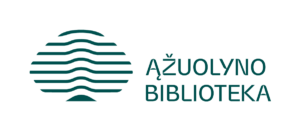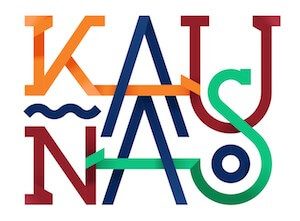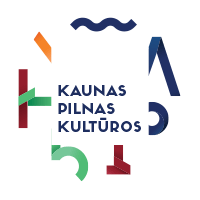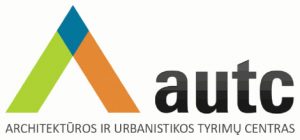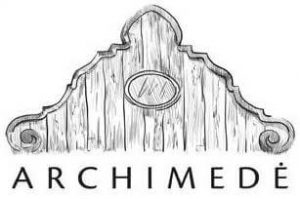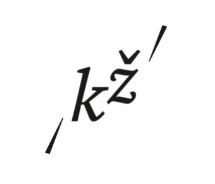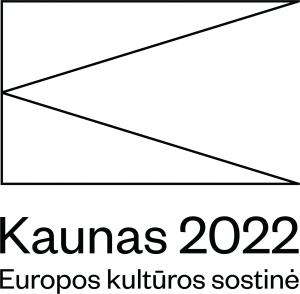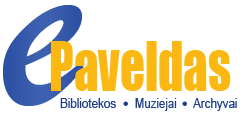Dr. Rasa Varsackytė
Dr. Mindaugas Balkus
Overview of Kaunas History
Archeological excavations testify to the fact that people started settling at the confluence of the Nemunas and the Neris rivers as far back as the 7th–6th millenium BC; the most numerous collections of ceramics and other artefacts are from the 2nd–1st millenium BC. During that period people settled in the territory of the present day Kaunas: Eiguliai, Lampėdžiai, Linkuva, Kaniūkai, Marvelė, Pajiesys, Romainiai, Petrašiūnai, Sargėnai, Veršvai, the confluence area, Žaliakalnis.
Kaunas was first mentioned in annals in 1361, when the German Order was getting ready for an attack on Kaunas Castle. The history of Kaunas as a city, however, started in 1408, when Grand Duke Vytautas granted its citizens the privilege of self-government based on Magdeburg Law. Thus the community of free and economically-independent merchants and craftsmen was legalised, responsible directly to the ruler. Vytautas ceded Kaunas the right to own the scales, wax processing, and woolen cloth trimming facilities. The scales were used for weighing the goods brought to the city or packed on site, the wax manufactury checked the quality of wax and prepared it for export by moulding it into fixed-size pieces, while the wool trimming workshop was meant for finishing fabrics. Those were profitable, monopolistic enterprises.
The legal and economic independence of Kaunas was further strengthened by privileges granted by Vytautas in 1415 and Žygimantas Kęstutaitis in 1432. The privilege by Kazimieras in 1440 permitted the city to have an annual 8-day fair starting on Virgin Mary Assumption Day (August 15). It was one of the first permissions to organise fairs in Lithuanian cities. Among other regulations, Kazimieras' privilege in 1449 banned retail trade by guest merchants. This ban was strengthened by Aleksandras' privilege in 1492, which was of special significance for the city economy: the ruler ordained that guest merchants had no right to sell their goods in Lithuanian towns and settlements which did not have Magdeburg rights. Guest merchants could trade only in Kaunas and only with Kaunas citizens; the latter being granted the right of middlemen; thus city guests were not allowed to trade among themselves, only via Kaunas citizens. The previously introduced stowage (sankrovos) right was ratified, according to which visiting merchants had to stay in Kaunas for at least three days and sell their goods to the local citizens before moving to other self-governing cities of the Great Duchy of Lithuania or abroad. For a long time, the customs-house was situated in Kaunas. In 1441–1532 an office of the Hanseatic league was open in Kaunas, however, the Hanseatic activities were substantially hindered by the local merchants. In addition to trade, crafts were also developing rapidly: the first four craft-workshops were set up in the second half of the 16th century, the number growing to twelve in the late 17th century, while at the end of the 18th century there were 10 workshops in the city. The total number of the workshops functioning in the 16–18th centuries was 23, representing 36 crafts, such as shavers, skippers, weavers, tailors, armourers, glaziers, etc.
The power of the self-governing Kaunas was shared by three interrelated major institutions: vaitas (the Mayor), the Council or Magistrate (12 lay judges and 4 burgomasters) and the Benchers' Court (12 persons). The city‘s authorities operated in the Town Hall, the construction of which started in 1542.
It is worth mentioning that the heraldic seal of Kaunas, introduced in the early 15th century during the reign of Grand Duke Vytautas, is the oldest city heraldic seal known in the territory of the Grand Duchy of Lithuania; it is the widely accepted symbol of Auroch. Folowing the medieval European standards, Kaunas stressed its prosperity by building the city wall, the construction of which started in the early 17th century. Unfortunately, due to later wars and economic crises it was not finished. Besides, with the fast progress of military technologies and tactics in the 17th century, the city wall lost it defensive value. The erection of the wall, however, made the city life safer, at least for some time, since it put an end to the attacks by various plunderers.
The Kaunas community embraced not only citizens, but also noblemen and clergy. Like in other cities, they formed separate adminstration units, the so called jurisdika, independent from the city rights. Kaunas Castle was an important state institution since it was the residence of the elder seniūnas who was appointed by the head of the local nobility an administered Kaunas region (pavietas). After the reforms by the second Statute of Lithuania, self-government of nobility regions pavietai was introduced: noblemen would form their own governing bodies – seimeliai, elect their representatives to the Parliament (Seimas) and write instructions for them. Therefore Kaunas was a venue of numerous seimeliai or Castle Courts (for criminal cases)and Land Courts (for civil cases) residing there. Even though there were no big conflicts between citizens and nobility, the noblemen harmed the city by having obtained the right since the second half of the 16th century to produce goods for export and to export grain without customs.
The Catholic church played an a significant role in the city life. One of the first churches in Kaunas was Blessed Virgin Mary's Assumption Church (also called Vytautas the Great Church), funded by Grand Duke Vytautas around the year 1400 and passed on to Franciscans. The Parochial St. Peter and Paul's Church was built early in the 15th century, first mentioned in 1413. The Parochial Church was mainly supported by the citizens, while other churches would frequently get support from noblemen. On the verge of the 15th and 16th centuries, the city was beautified by St. Michael's Church (donated to Kaunas Parochial Church by Grand Duke Aleksandras in 1503, and passed on to the Benedictine Convent established by Kaunas Marshal (maršalka) A.Skorulskis in 1621), St. Gertrude's Church (donated to the Parochial Church by the Duke in 1503, handed over to the Rochite monks in 1750), as well as St. George the Martyr's Church and the adjacent Bernardine Monastery. A great number of monasteries and convents were established the 17th century under the influence of the Catholic Reform during the Baroque period. In addition to the above mentioned Benedictine convent, the Bernardine convent with the Holy Trinity Church was re-established by Kaunas region (pavietas) Marshal A.Masalskis, after an unsuccessful start at the beginning of the 17th century. In 1639, Vilnius bishop Abraomas Vaina permitted Jesuits to move to Kaunas, and they settled in the buildings donated by the three brothers Kojalavičiai: Albertas, Kazimieras and Petras, while the first mass took place in Thunder House (Perkūno namai) purchased by the Order. The year 1649 marks the start of the Jesuit school (later college); but St. Francis Xavier Jesuit Church was built sometime after the mid-17th century wars. The ensemble of the Heart of Christ (St. Casimir, St. Dominic and Blessed Virgin Mary's Assumption) Church and monastery was initiated around 1641. In 1667, the construction of Holy Mary Visitation Church and the Camaldulian Monastery began, funded by the Chancellor of the Grand Duchy of Lithuania Kristupas Zigmantas Pacas. In 1707, the barefoot and reformed Carmelites arrived in Kaunas and setled in St. Eliah and St. Gertrude's Church; in 1770, they were given the Church of Holy Cross (or Discovery of Holy Cross). The Parochial Church and the monasteries ran schools. The Catholic churches and monasteries, together with laymen, set up different religious fraternities.
In 1682–1683, Evangelists-Lutherans, who had only had a prayer house before (the first Lutheran mass took place in 1577), built their own church in Kaunas. Following Jonas Kazimieras' resolution in 1655, Kaunas Lutherans were given one fourth of the city magistrate seats – approximately corresponding to the proportion of Lutherans in Kaunas. The majority of the local Lutherans were of German origin, and had their own school and a nursing home.
In addition to Lithuanians, Germans and Poles, Jewish people started settling in Kaunas in the second half of the 17th century. They were not allowed to live in the city for a certain period in the 18th century, so most of them stayed in the Vilijampolė settlement owned by the Radvila family. There was also a small Tartar community there.
Kaunas experienced its greatest economic boom in the late 16th – early 17th century. During that period, a great number of buldings were erected, many of them brick houses. A severe blow to the prosperity of Kaunas resulted from the mid-17th century wars and occupation, followed by the plague epidemic: many buildings were destroyed, trade and crafts declined. The almost restored city was badly devastated by the North War: in 1701–1707 the city was burned and destroyed; in 1708 it was desolated by famine and plague. In 1732, the recovering city was ravaged again by a fire. More favourable conditions for trade and crafts developed in the third quarter of the 18th century. In 1771, the renovation of the Town Hall and the Parochial Church began. The convalescing Kaunas, as one of the largest cities of the Grand Duchy of Lithuania, gradually evolved in the period of the four-year Seym. Unfortunately, after the collapse of the state in 1795, Kaunas fell under the rule of tsarist Russia.
The new authorities gradually introduced their own order. In 1808 the Magistrate was replaced by the Duma consisting of 6 persons, valid until 1876. By that year the Duma, performing organisational functions, had grown up to 72 members who also elected the so-called City Council (the executive body consisting of the Head of the City and the Council members). In 1812 Kaunas was drawn into the whirl of the Russian-French war: on June 23, Napoleon I with his army of about 220,000 started crossing the Nemunas by pontoon bridges. The Emperor stayed in Kaunas until June 27, with the Carmelite monastery as his headquarters. On December 7 of the same year, Napoleon visited Kaunas again: having lost the war in Russia, the Emperor was retreating to France. His withdrawing army reached the city on December 12, and two days later the Russian Cossacks took command, making Kaunas the site of the French army's final catastrophy. The city itself suffered from both armies.
1843 was the year of great significance in the 19th century city history as Kaunas became the centre of the newly established Kaunas gubernija (province). In the same year the first Kaunas newspaper, Kovenskije gubernskije vedomosti, was published. Around that period Kražiai gimnazija (gymnasium, advanced secondary school) was moved to Kaunas and called Kaunas Boys‘ Gimnazija (the Jesuit College functioned in Kaunas until the Jesuit Order was closed in 1773, then it was reorganised into a secular school under the Education Commission). From 1843 to 1869 the city territory doubled. Around the year 1847 the formation of the so-called Nikolaievski prospect, a boulvard-type street (present Laisvės alėja) started. In 1860 the street was stone-paved. The development of Kaunas was significantly enhanced by the railway line St Petersburg-Warsaw built in 1861–1862. The urban image started changing in the second half of the 19th century: new buildings were springing up in the new part of the city – the future administrative and commercial centre. Under the Tsarist Government Decree in 1864, the Žemaičiai (Telšiai) Bishopric Centre was moved from Varniai to Kaunas. In 1866 the first concerts and literary programmes were held by music and literature fans; Kaunas had its Music Society. In 1870 Kaunas Readers' Society was set up, which established the first public library. However, more prominent cultural life activities were hindered by the Russian policies aimed at suppressing any national movement. In 1879 Kaunas was granted the status of a 1st class military fortress of the Russian Empire frontier. From 1882 to the First World War Kaunas got surrounded by a ring of star-shaped fortifications, fortresses, and batteries (in 1895, the Kaunas Garrison Orthodox Church for Russian soldiers, Soboras, was consecrated). In 1892, under a contract with Swiss engineer E. O. Dupont, a horse tramway konkė was introduced, running from Town Hall square to the Railway Station. The number of cultural institutions was growing. In 1892, the City Theatre with 500 seats was built, and in 1898, the Kaunas City Museum was opened in the City Hall. After tsarist Russia lifted the ban on Lithuanian press, early in the 20th century Kaunas had a Lithuanian (J. Naujalis) bookshop, S. Banaitis Printing House, St. Juozapas and St. Zita Lithuanian societies, and the first Lithuanian Saulės Teachers' Gymnasium. During World War I, Kaunas was occupied by Germans in 1915–1918 (despite the great efforts and expenses, Kaunas Fortress managed to resist for only 11 days). After the war, Vilnius was taken by Bolsheviks, and later by Poles, so Kaunas was a provisional capital of Lithuania from early January, 1919 to October, 1939. The Constituent Assembly Seimas started its work here on May 15, 1920, all State institutions, embassies and consulates were operating here, too. Having become the political, cultural, and economic centre of the country, Kaunas revived and gained some modern European features. This is how Kaunas is described by Dr. Margeris-Šeštokas in his book „Amerikiečio įspūdžiai Lietuvoje“ (An American's Observations in Lithuania, 1931):
“When you come to Kaunas, you feel like you are in a big city (…) Not only different types of people, rush, intrigues, scandals, sensations, hotels, restaurants, pubs, churches, the drama theatre, the opera house, cinema theatres, museums, large schools with a university, government offices, public squares, parks, some wide streets, numerous policemen, but also the air itself seems to be telling that this city is living the actual life of a metropolis”.
All through the 1920s, modernization of Kaunas was strongly encouraged and supported by the city's Mayor (burmistras) Jonas Vileišis (holding office in 1921–1931). His work was continued by successors Antanas Gravrogkas (1932–1933) and Antanas Merkys (1933–1939). The city looked prettier thanks to new buildings and renovation of old ones, asphalted streets (some of which had not even been cobbled before), and modern bridges (Aleksotas and Vilijampolė bridges, built in 1929 and 1930, respectively). According to 1928 data, some 13% of Lithuania's trade and 15% of its industrial enterprises were concentrated in Kaunas. In 1929, water and wastewater systems started operating in Kaunas. During the same year the horse-tramway konkė and was replaced by regular city bus lines. In 1931, the Žaliakalnis funicular began to function, followed by the Aleksotas funicular in 1935. The city's cultural life flourished. In 1920, the Opera house opened in Kaunas, and in 1921, the Military Museum was established (named after Vytautas the Great in 1930). In 1922, the State Theatre was opened and the Lithuanian University was established, named after Vytautas Magnus in 1930. In 1924, the first Song Festival of Lithuania took place. In 1925 the M. K. Čiurlionis Gallery was built. In 1938 the first National Olympic Games were held in Kaunas, while in 1939 the European basketball championship took place in Kaunas, and a Sports Hall with 5,000 seats was erected for the event.
Sadly, the welfare of Kaunas, as well as the whole state, was soon brutally shattered. The last meeting of the Ministers‘ Cabinet, which accepted the ultimatum of the USSR government, took place at the President's office on the night of June 14–15, 1940. On June 15, 1940, the Soviet Union occupied Lithuania. In a year's time, on June 22, the war between the Soviet Union and Germany broke out, and the following day an uprising was organised by the Lithuanian Activist Front (LAF), which soon spread across Lithuania. The activists, having taken the Kaunas radio station, declared restoration of independence and formation of a provisional government. Germans entered Kaunas on June 25, and on June 28 they ordered the Lithuanian troops to stand down and forced the Provisional Government to dissolve on August 5. In July 1941, 2977 Jews were shot in the 7th fort of the Kaunas Fortress. On August 15th, the ghetto district was established, and 9,200 prisoners from the ghetto were exterminated in the 9th fort in October. In November, another 5,000 Jews brought from different German cities were killed there. In 1943, the Kaunas ghetto was reorganised into an SS concentration camp. While withdrawing from Kaunas on July 8–13, 1944, the German troops liquidated the ghetto: five to six thousand Jews were moved to German concentration camps, about one thousand perished outright, and only some 300 ghetto prisoners managed to escape. The headquarters and publishing houses of the anti-Nazi, later anti-Soviet organisations, such as the Chief Committee of Lithuania‘s Liberation, Lithuanian Front, Union of Fighters for Lithuania‘s Freedom, and Lithuanian Freedom Army, were located in Kaunas.
On August 1, 1944, Kaunas was re-taken by the Soviet Army, beginning the second Soviet occupation. Kaunas became the major centre of resistance. From the very start of the Lithuanian guerrilla war, the most important guerrilla districts – Tauro, Prisikėlimo, Didžiosios Kovos – were based around Kaunas. In July 1945, the Declaration of the Lithuanian Nation was proclaimed in Kaunas, and the Address to the United Nations and the Whole Civilized World was published, reminding the world of the resolutions of the Atlantic Charter. Important underground publications were being disseminated in the city, conspiratory lodgings were set up, false documents were being issued, printing equipment storage was organised. On All Souls' Day in 1955, the first public anti-Soviet rally took place in Kaunas: citizens burned candles in the military cemetery and sang national songs, resulting clashes with the militia. On May 14, 1972, a nineteen-year-old Romas Kalanta, having exclaimed „Freedom for Lithuania!“, immolated himself in the garden of the Musical Theatre (in front of the then city Executive Committee building). The event led to new forms of resistance: total passive resistance all around Lithuania. On November 1, 1987, a non-sanctioned rally took place at Maironis tomb, where people gathered to mark Maironis' 125th birthday anniversary. Priest Robertas Grigas and other speakers denounced Soviet censorship and called for restoration of Lithuania's statehood. On June 10, 1988, the initiating group of the Kaunas grassroot movement Sąjūdis was formed; they published the newspaper Kauno aidas (Kaunas Echo). On October 9, 1988, the tricolour flag was raised above the tower of the Military Museum named after Vytautas the Great. On February 16, 1989, the Freedom Monument was re-unveiled, and a year later, rebuilding the Monument to those who Perished for Lithuania‘s Freedom was completed. On September 1, 1989, Vytautas Magnus University was re-established.
Kaunas became the city of students in the revived Lithuania: during the academic year, the student population is approximately 60,000. In 1991, an international jazz festival, Kaunas Jazz, was initiated. Popes John Paul II (1993) and Francis (2018) visited Kaunas and celebrated Holy mass at the confluence of the two rivers. Since 1996, the internationally-known Pažaislis Classical Music Festival has been held during the three summer months. Since 1997 The biennial of contemporary art “Kauno bienalė” is held every two years. Kaunas basketball team, Žalgiris, won the European Cup in 1998, as well as the titles of the Euroleague champions in 1999. Since 1999, Kaunas City Day is celebrated on May 20. In 2000 The 2nd Lithuanian Eucharistic Congress – the main event in Lithuania celebrating the Anniversary of Christianity – was held in Kaunas. The panorama of cultural events in Kaunas was filled with new festivals (in 2002 The festival “Operetta in Kaunas Castle” was started, in 2004 – The annual photo festival “Kaunas Photo”). In 2011 The final of the EuroBasket Championship took place in the new “Žalgiris arena”. Academic and business sectors combine in “Santaka” Valley: from 2014 The Newest Pharmacy and Health Technology Center, KTU Science and Technology Centre and Technological Business Incubator are operating here. Architectural heritage of Kaunas is recognized internationally – in 2015 The European Commission awarded the interwar modernist architecture of Kaunas by the European Heritage Label. Kaunas remains the important transport and logistics center in Lithuania: in 2015 the European railway track “Rail Baltica” reached the city. In 2022 Kaunas and Kaunas district were the capital of European culture. More than 1,500 events (exhibitions, spectacles, performances, festivals, discussions, forums, etc.) took place during the year, in which participated about 1.7 million people. In 2023 the interwar architecture of Kaunas, located in Naujamiestis and Žaliakalnis, was included in the UNESCO World Heritage List.
Kaunas population:
Mid-16th century: 7,000–8,000;
Mid-17th century: ~15,000;
1667–1673: 4000–4500;
18th century: ~ 4000;
1812: 3000;
1843: 14 297;
1896: 67 794 (42 251 citizens, 19 238 soldiers and officers, 3137 noblemen, 1432 peasants, 1169 merchants, 493 foreigners, 74 clergymen);
1923: 92 446 (58,97% Lithuanians);
1959: 214 348;
1970: 305 100;
1980: 376 000;
1984: 400 000;
1990: 429 800;
2001: 378 943;
2005: 361 930;
2017: 292 691;
Beginning of 2023: 305 120.
1. Infografikas. Apie Kauną skaičiais. Oficialiosios statistikos portalas. – Prieiga per internetą. URL: https://osp.stat.gov.lt/infografikas-kaunas-2023. – Žiūrėta 2023 m. lapkričio 18 d.
2. Istorinis pripažinimas: Kauno tarpukario architektūra įrašyta į UNESCO Pasaulio paveldo sąrašą. – Prieiga per internetą. URL: https://www.kaunas.lt/2023/09/18/istorinis-pripazinimas-kauno-tarpukario-architektura-irasyta-unesco-pasaulio-paveldo-sarasa/. – Žiūrėta 2023 m. lapkričio 21 d.
3. Kaunas: istorija, praeitis, dabartis, Kaunas, 2006.
4. Kauno savasties ženklai, sudarytoja ir projekto vadovė Rimantė Tamoliūnienė, Kaunas, 2009.
5. Lietuvos statistikos metraštis 2017, Vilnius, 2017, p. 16.
6. Kiaupa Z., Kauno istorija: Kauno istorija nuo seniausių laikų iki 1655 metų, t. 1, Vilnius, 2010.
7. Kiaupa Z., Kauno miesto savivalda, Darbai ir dienos, Kaunas, 1997, t. 4 (13), p. 19–28.
8. Kiaupa Z., Lietuvos miestų savivalda XIV–XVIII a., Lietuvos heraldika, sudarytojas ir parengėjas E. Rimša, Vilnius, 1998, [t.] 1, p. 163–185.
9. Kiaupa Z., Vaito rinkimas Kauno magistrate (XVI–XVIII a.), Lietuvos istorijos metraštis, 1974 metai, Vilnius, 1976, p. 13–18.
10. Lietuvninkaitė N., Kauno senoji knyga: raiška ir plėtotė 1843–1918 m., Versus Aureus, 2006.
11. Liudininkų parodymai [projekto „Kaunas – Europos kultūros sostinė 2022“ leidinys; idėjos autorė Daiva Price], Kaunas, 2023.
12. Lukšionytė-Tolvaišienė N., Gubernijos laikotarpis Kauno architektūroje: svarbiausi pastatai ir jų kūrėjai (1843–1915), Kaunas, 2001.
13. Optimizmo architektūra: Kauno fenomenas, 1918–1940, sudarė Marija Drėmaitė, Vilnius, 2018.
14. Rimša E., Kauno miesto herbas XV–XX a., Vilnius, 1994.
15. Rimša E., Lietuvos Didžiosios Kunigaikštystės miestų antspaudai, Vilnius, 1999.
16. Šeštokas-Margeris, Amerikiečio įspūdžiai Lietuvoje (1931), Kaunas, 1932.
17. Urbaitytė R., Kauno amatininkų cechų susikūrimas XVI–XVIII a., Kauno istorijos metraštis, t. 3, Kaunas, 2002, p. 263–273 (straipsnis parengtas bakalauro darbo pagrindu).
18. Varsackytė R., Kauno miesto valdžios žmonės XVII–XVIII a., Kauno istorijos metraštis, t. 5, Kaunas, 2004, p. 7–81 (straipsnis parengtas magistro darbo pagrindu).
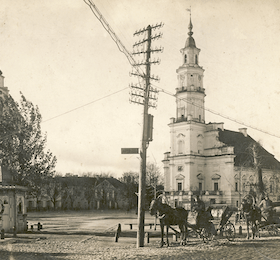
Detailed information on the evolution of Kaunas Self-Government Institutions.
ReadIf you find any inaccuracies or if you would like to submit additions, please send us your comments by filling out this form:

